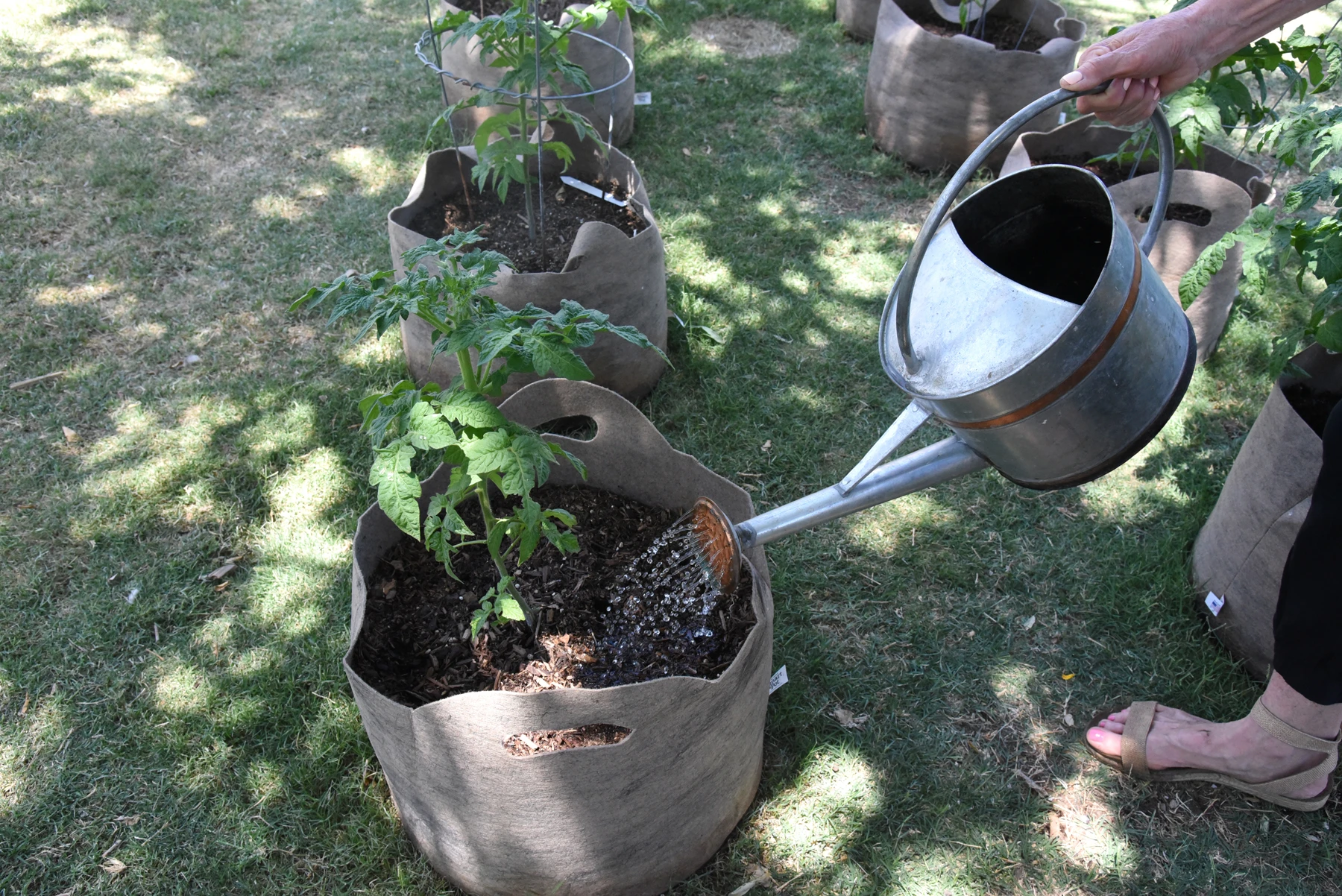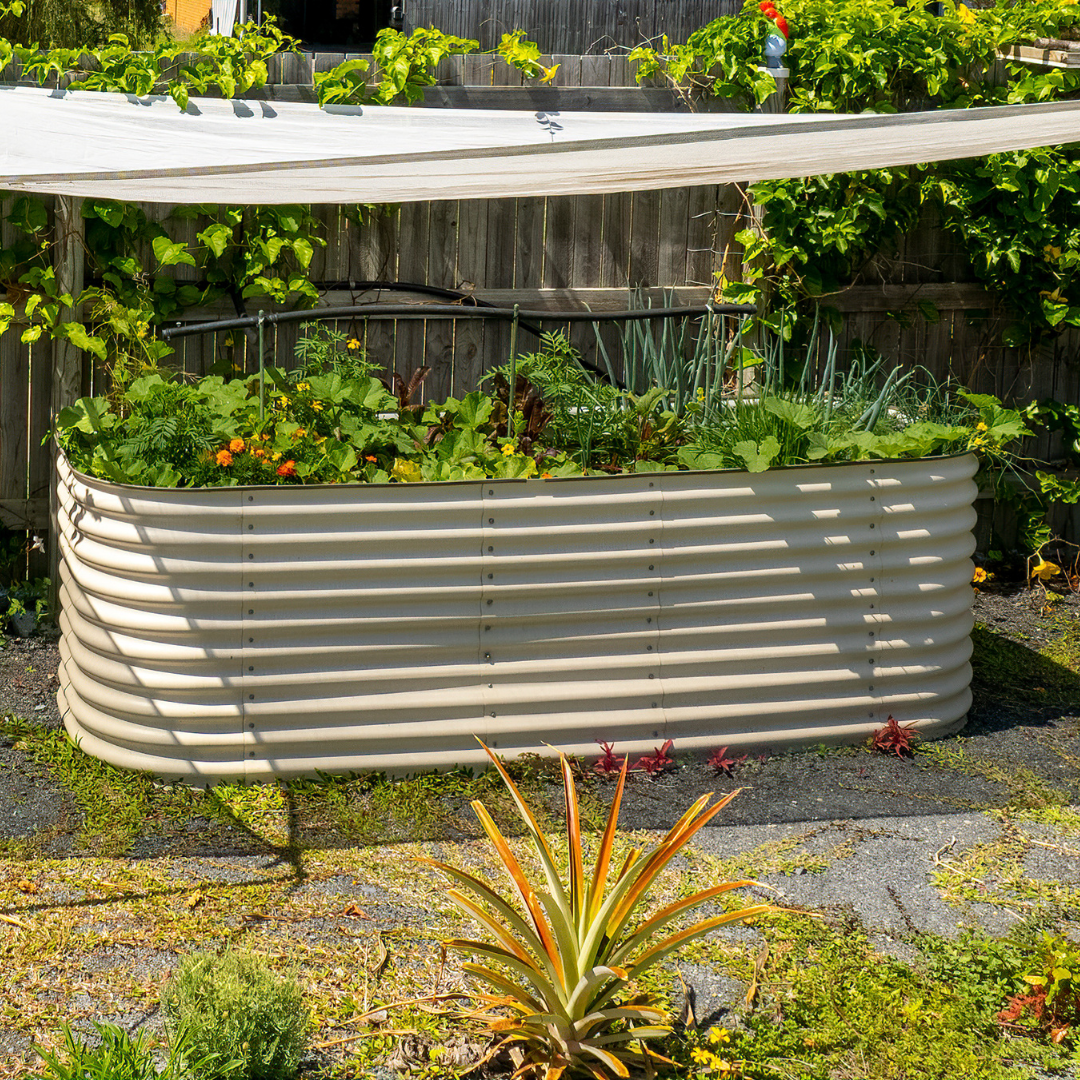Well folks, as you might have guessed, my 2023 fall garden plan and tips are a little different than they have been in past seasons. As the scorching sun continues to beat down upon the arid, low desert of Phoenix, Arizona, a unique set of challenges and considerations arise for those seeking to cultivate a thriving fall garden. In this extreme heat, selecting the right location becomes paramount, taking into account that areas basked in sunlight and extreme heat now will change in the next couple of months. My August garden tips are all about planning for your fall harvest right now. I’ll explore strategies and for gardening in the on-going 110+ degree temperaturs of Phoenix, addressing key topics such as garden placement, soil preparation, and the vital role of fertilization and maintaining soil fertility to conquer the challenges presented by this unique summer.

A little extra water & shade can do wonders!
Garden Placement and Soil Preparation:
- Choose a sun-drenched location, considering that areas sunny in summer might not receive as much sunlight during the winter months.
- Growth slows down as fall progresses, and it almost stops when daylight hours are less than 10 hours. For continuous winter harvesting, plan to have your crops near or at maturity by this time.
- Opt for well-drained soil. Raised beds and planting bags are great options!
- Space overwintering crops wider than spring or fall planted crops to promote airflow and discourage pests.

My sweet potatoes with 40% shade cloth will be harvested in the fall.
Fertilization and Maintaining Soil Fertility:
- Avoid heavy fertilization in the fall since nutrient uptake slows down during winter. Consider using foliar feeds, such as liquid fertilizers applied directly to the leaves, to provide essential nutrients to the plants.
Prep Now, Enjoy Later!
All your hardwork and planning – a.k.a. sweat equity – will be worth it when you have wonderfully HOMEGROWN food to present at the holidays! Tender crops can be harvested until cold weather kills them off, with some even benefiting from a touch of frost, such as lettuces, broccoli, and kale.
Here are a few more PKG Tips to maximize your fall and winter harvest:
- Make successive sowings of fall crops at shorter intervals to accommodate slower growth and reduce the waiting time for transplanting.
- Sprouting vegetables, like broccoli, cabbage, and cauliflower, can be overwintered at an immature stage and will produce a flavorful yield the following spring, undeterred by winter temperatures.
- Overwintered greens, such as kale and collards, will delight you with delicious flower stalks in the spring.
- Most root vegetables can be left in the ground over winter but should be harvested before spring, as they tend to bolt (go to seed) when exposed to fluctuating temperatures and longer daylight hours.
The bottom line is, even after our intense and on-going summer temperatures, August is the prime time to prepare your garden for a season of abundance. With this updated fall garden plan, you’ll enjoy the rewards of your hardwork with wonderful fall and winter harvests. Stay tuned for more gardening tips as we embark on our fall and winter garden journey!
Want to know more? Follow me on Instagram and Facebook!
Ready for a garden adventure, but not sure where to start? Head to the PKG homepage or call 602-722-7971 to book a consultation.





